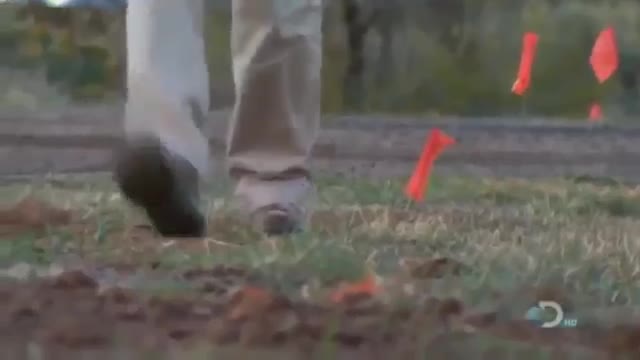Premium Only Content

National geographic - T Rex (Tyrannosaurus Rex) - New Documentary
National geographic - T Rex (Tyrannosaurus Rex) - New Documentary
Tyrannosaurus[nb 1] is a genus of coelurosaurian theropod dinosaur. The species Tyrannosaurus rex (rex meaning "king" in Latin), is one of the most well-represented of the large theropods. Tyrannosaurus lived throughout what is now western North America, on what was then an island continent known as Laramidia. Tyrannosaurus had a much wider range than other tyrannosaurids. Fossils are found in a variety of rock formations dating to the Maastrichtian age of the upper Cretaceous Period, 68 to 66 million years ago.[2] It was the last known member of the tyrannosaurids,[3] and among the last non-avian dinosaurs to exist before the Cretaceous–Paleogene extinction.
Like other tyrannosaurids, Tyrannosaurus was a bipedal carnivore with a massive skull balanced by a long, heavy tail. Relative to its large and powerful hind limbs, Tyrannosaurus fore limbs were short but unusually powerful for their size and had two clawed digits. The most complete specimen measures up to 12.3 m (40 ft) in length,[4] up to 3.66 meters (12 ft) tall at the hips,[5] and according to most modern estimates 8.4 metric tons (9.3 short tons) to 14 metric tons (15.4 short tons) in weight.[4][6][7] Although other theropods rivaled or exceeded Tyrannosaurus rex in size, it is still among the largest known land predators and is estimated to have exerted the largest bite force among all terrestrial animals.[8][9] By far the largest carnivore in its environment, Tyrannosaurus rex was most likely an apex predator, preying upon hadrosaurs, armoured herbivores like ceratopsians and ankylosaurs, and possibly sauropods.[10] Some experts have suggested the dinosaur was primarily a scavenger. The question of whether Tyrannosaurus was an apex predator or a pure scavenger was among the longest ongoing debates in paleontology.[11] It is accepted now that Tyrannosaurus rex acted as a predator, and opportunistically scavenged as modern mammalian and avian predators do.
More than 50 specimens of Tyrannosaurus rex have been identified, some of which are nearly complete skeletons. Soft tissue and proteins have been reported in at least one of these specimens. The abundance of fossil material has allowed significant research into many aspects of its biology, including its life history and biomechanics. The feeding habits, physiology and potential speed of Tyrannosaurus rex are a few subjects of debate. Its taxonomy is also controversial, as some scientists consider Tarbosaurus bataar from Asia to be a second Tyrannosaurus species while others maintain Tarbosaurus is a separate genus. Several other genera of North American tyrannosaurids have also been synonymized with Tyrannosaurus.
As the archetypal theropod, Tyrannosaurus is one of the best-known dinosaurs since the 20th century, and has been featured in film, advertising, and postal stamps, as well as many other types of media.
-
 2:05:40
2:05:40
Roseanne Barr
5 hours ago $33.04 earnedThe Perverse Reverse | The Roseanne Barr Podcast #76
68.4K108 -
 35:40
35:40
TheTapeLibrary
13 hours ago $0.57 earnedThe Priest Murders & The Mystery of William Toomey
3.03K4 -
 LIVE
LIVE
Adam Does Movies
2 hours agoAwful New Christmas Movies! - Dear Santa - Our Little Secret - Nutcrackers - LIVE!
246 watching -
 3:16:05
3:16:05
Nerdrotic
6 hours ago $22.43 earnedWoke Killed Comedy, Hollywood Infighting, Girlboss Rohirrim | Friday Night Tights 330 w/ It'sAGundam
89K11 -
 1:16:08
1:16:08
Edge of Wonder
5 hours agoThe Maya Worshiped Turkeys, Bizarre Thanksgiving Facts & Weird News
7.65K -
 1:10:47
1:10:47
Sarah Westall
5 hours agoARPANET and Who Really Invented Blockchain: Reconstructing Reality w/ Bryan Ferre
15.5K1 -
 LIVE
LIVE
Quite Frankly
6 hours ago"Tony Black Friday & Thanksgiving Left-Overs" 11/29/24
793 watching -
 1:10:05
1:10:05
2 MIKES LIVE
3 hours ago2 MIKES LIVE #149 Open Mike Friday! Special guest Lance Caroselli!
14.1K2 -
 8:03
8:03
Colion Noir
4 hours agoFacebook Just Banned Smith & Wesson, Why Gun Owners Should Care?
27.4K34 -
 8:10
8:10
Space Ice
6 hours agoSurf Ninjas Is Rob Schneider At His Rob Schneiderest - Rob Schneider Movie Ever
13.6K18